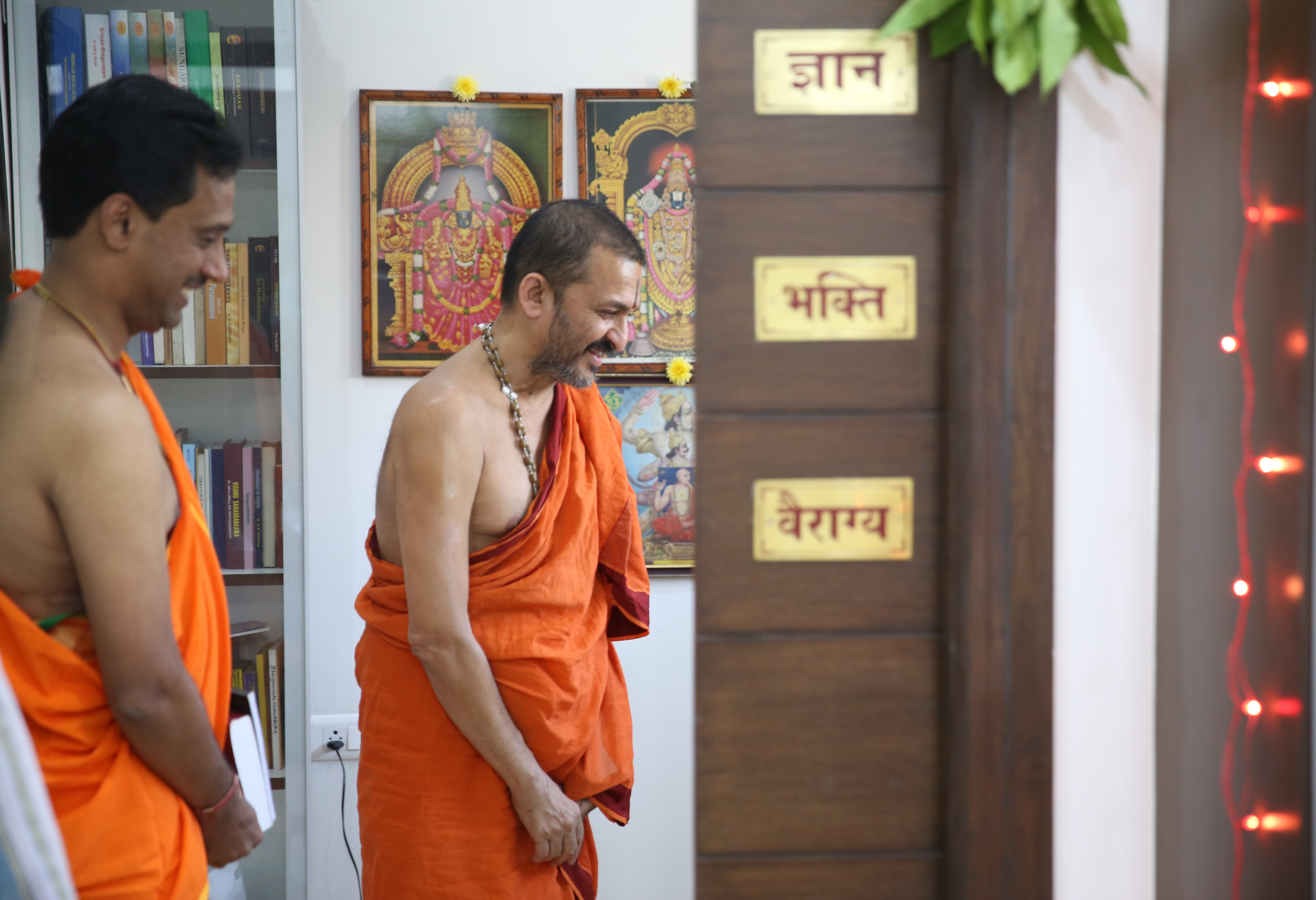- Anugraha : His Holiness Sri Sri Vidyadheesha Teertha Sripadaru
- Compilation : Krishna Sakha, Mudarangadi
- Translation : Dr|| Sudheendhra Putty, Secunderabad
In order to ameliorate the sufferings of the humankind on the earth, the Lord determined to make His appearance in the yadu clan. The four-faced Brahma then ordained all the devatas to also be born on earth during the said period. Here, it may be discerned that Brahma, while alluding to God (Sri Krishna), uses the phrase Eeshwareshwara. This phrase underlines the supremacy and omniscience of Sri Krishna.
The Bhagawata says thus:
sa yaavadu vyabharameeshwaraeshwara
swakaalashaktyaa kshapayamshwaredbuvi
That the term eesha means supremacy, lordship or mastery is well known; each of them is a relative term and may be applicable to a person according to their respective abilities. For instance, each person exercises control or mastery over his/her organs. The husband exercising control over the wife and children and so on – this is a pattern that is evident in our everyday lives.
As we go up the pyramid of gradation, it dawns that the lordship exercised by the devatas over the earth and indeed, the universe is greater. Among the devatas too, there is a hierarchy that operates. Who, then, possesses this lordship and determines all else? This is a postulate our ancient seers cogitated upon. In determining the lordship of all that is in the human body or in the world outside, Lakshmi, Brahma, Garuda, Shesha, Rudra et al emerge primarily. In this context, each of them maybe (relatively) termed eesha. As we ascend the hierarchical pyramid, it dawns that He who independently determines and bestows the relative lordship to the ever-liberated Lakshmi, Brahma, Rudra and the whole pantheon of devatas, is the sole and ultimate eesha. He is Keshava. Eeshebhya Brahmadibhya Varah Eeshwarah
Acharya Madhwa substantiates this philosophical thought by bringing forth the following from the Brahmavaivarta:
eeshebhyo brahmarudrashrishaadibhyo yato bhavaan
varootha eeshwaraakhya the mukhyaa naanyasya kasyachit
Thus, the term Eeshwara first and foremost connotes God (Narayana/Krishna) and thereafter, in order of descent, alludes to Lakshmi, Brahma, Rudra et al. Since He is the ultimate Eeshwara and Eeshwara of other Eeshwaras, (as seen above) the phrase Eeshwareshwara is apt for Him.
The depth of the utterances of Brahma can be grasped only when we so cogitate on the use of the words and phrases. By addressing Krishna as Eeshwareshwara, Brahma clearly underlines the supremacy and suzerainty of Krishna over Lakshmi, Brahma and Rudra. Even they realise that their lordship or supremacy is also bestowed upon them by Him. The apt way of cogitating upon Sri Krishna is not merely as a cowherd or as one’s Lord alone. Rather, it is to meditate upon Him as the Lord of the universe and the Lord of those who control various aspects of the universe (including Lakshmi, Brahma et al). That is the right edict. That is the edict of Vedavyasa. May we all cogitate upon Sri Krishna in the pathway shown by Vedavyasa.

Ever engaged in the sadhana of Srimadvaishnava Siddhanta of our Guru, Acharya Madhwa and all the Yatis and Dasas who have blazed this noble path. May HVG bless us all

Pingback: Sarvamoola Patrike : July-August 2019 – Sarvamoolapatrika
Thank you for the initiative …..well explained as well. Jai Sri Krishna